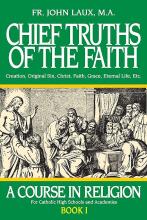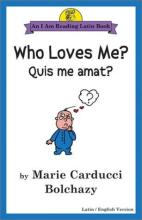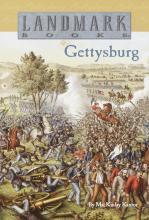No name
This is Our Town
This reading text is the first of three used in the third grade at Seton Home Study school. In the tradition of the Faith and Freedom readers, this book offers family stories centering around a parish Church and school, stories of saints, fairy tales, folk tales and some just plain silly stories designed for reading practice and pleasure.
This is Our Valley
This reading text is the second of three used in the third grade at Seton Home Study School. My children have enjoyed many of the stories as a read-aloud. The book provides a wide variety of selections - fairy tales, poems, folk tales, biographies, etc. These new reprints have a glossy soft-cover with a beautiful image and text with black-and-white pictures. Although the original images within the text were color, these reproductions are well-done. Given that some of the illustrations are of the cheezy-sixties variety, I think some of the illustrations actually came out nicer in black and white than in the original color.
This is Our Land
This reading text is used in the fourth grade at Seton Home Study School. It provides a wide variety of stories and poems of a rather engaging nature for young readers. Some examples include selected chapters from popular books by authors such as Beverly Cleary and Carolyn Haywood, several well-known Fables and Fairy Tales, Greek Myths, Bible Stories, stories about Saints, and stories and poems from nature. The comprehension/study questions which follow each story are excellent. They are designed to help the reader identify subtleties in the story and consider the deeds of the characters. My husband, who has read some of these selections aloud to the children complains that they (stories such as those written by Cleary and Haywood) were "horribly written."
Chief Truths of the Faith
Originally published in 1928, the current edition published by TAN Books is a complete reproduction of the 1934 edition. The 1990 editor added some footnotes to bring the series more "up-to-date." This is a highly recommended series — it is the recommended high school religion text for Kolbe Academy, Mother of Divine Grace and Seton Home Study. I have not worked my way through an entire book from this series yet, but I found it to be an excellent reference resource, especially before the Catechism of the Catholic Church was released. It makes an excellent reference because it is laid out in a very practical manner. It is possible to study a single chapter in the middle of the book in order to more fully understand a particular topic, such as the Catholic Church's teaching on Evolution (ch. VI, Bk. 1 The Origin of the Human Race) which did not change with Vatican II or Our Holy Father's recent (and highly misunderstood and misquoted) statement on Evolution. Because of this practical format, parents may find this series very useful in learning about a particular concept more fully in order to teach it to their younger children. The series is extensively illustrated.
The full series of Fr. Laux's "A Course in Religion" includes the following titles:
- Chief Truths of the Faith (Book I)
- Mass and the Sacraments (Book II)
- Catholic Morality (Book III), and
- Catholic Apologetics (Book IV)
For those interested in using this as a high school religion series, Laura Berquist has syllabi for this series, which include quizzes and answer keys and are available from Emmanuel Books. Seton Home Study offers, even for those not signed up with their entire program, a course using this text. This service includes telephone consultation, test correcting, grading, etc.
How Many Animals?/Quot Animalia?
What a great idea - simple Latin readers to introduce young children to the language. Big pictures are paired with large, clear print, just like an English easy-reader. This first book in the series is a simple picture book with very nicely drawn, realistic pen and ink illustrations. The format allows readers to intuitively figure out what some basic words mean by connecting them with the pictures. The text introduces 13 types of animals, offering each Latin word in the singular and plural. The reader is also exposed to the Roman numerals from I-XII, and C as well as the Latin names for the same numbers. Just the last few pages introduce a few more words, including some relevant adjectives. The book wraps up with a complete translation, glossary and notes in the back.
This is a really nice beginning book for young children - particularly those whose older siblings are studying the language. Highly recommended!
Donated for review by Bolchazy-Carducci
What Color Is It?/Quo colore est?
This title offers charming, child-friendly pen-and-ink illustrations to introduce the colors (in Latin) to young children. The text is quite a bit more complex than How Many Animals? Quot Animalia?, but would provide a good opportunity for young Latin scholars to practice their pronunciation by reading the book aloud to a younger sibling. Since the topic is "colors", I think this book will be best enjoyed if an artist in the family colors in the illustrations first. Translations and glossary are in the back.
Donated for review by Bolchazy-Carducci
What Will I Eat?/Quid Edam?
Lots of silly black-and-white pictures (which will likely appeal to certain funny-bones) and simple text introduce readers to the Latin words for many types of food. You'll find a monster eating pizza, a cow suggesting pork instead of beef, a hot dog enjoying a soda and... lots of good Latin content. Not my favorite book in this series, but perhaps not a bad way to introduce young children to some relevant Latin vocabulary. Young readers will probably not be ready to translate all the sentences on their own, but they can learn to recognize basic words and get a feel for the sound of the language.
Donated for review by Bolchazy-Carducci
Who Loves Me? / Quis me amat?
This book introduces names of family members - mother, father, sister, brother, grandfather, grandmother, fraternal and paternal aunt and uncle, cousins and God - through the eyes of a baby. I liked how small details on some of the pictures - like the words on a T-shirt - are written in Latin (and the translations are included in the back along with the rest of the text). The text is charming, but these pictures are a bit on the "goofy" side (very cartoon like and some weird proportions). For me, the pictures detracted somewhat from the text (although I admit to being a person who is rather fussy about illustrations - particularly in children's books). Also, there is a slight editing problem on pages 13-14 where the illustrations of the paternal and fraternal aunts are mixed up.
Donated for review by Bolchazy-Carducci
Gettysburg
The Civil War Battle of Gettysburg, Pennsylvania (July 1 – 3, 1863) is a complex, multi-faceted piece of history that would be difficult to understand after reading just one book. If you ever find yourself in the South-Central Pennsylvania, I would recommend a visit. I've been there twice and it's very a moving, historically interesting site.
This book offers a glimpse into a number of aspects of the human side of the war. The author met with a number of Civil War veterans personally, and so the accounts contained within the book are very human and anecdotal. He tries to give us a sense of the flavor of life in that time period; the way people thought about each other – particularly those on opposite sides of the Potomac River.
Like many Landmark books, this probably isn't the first place you want to turn to in studying about Gettysburg – and this one isn't quite as cohesive as I would like. I think it would be most interesting and accessible to upper grade schoolers who had already become familiar with events in a general way from a textbook or from a visit to the battlefield. My 11 year old daughter tackled this independently this past year in the midst of other books on the civil war as well as bits and pieces of Ken Burns' Civil War documentary and enjoyed and benefited from it.









